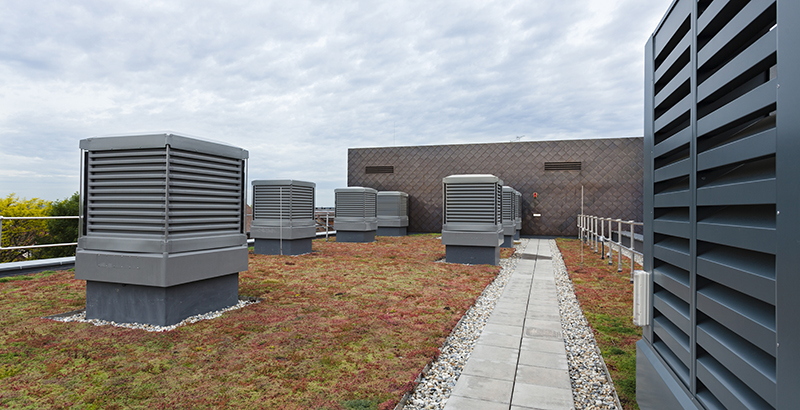It’s possible that I shall make an ass of myself. But in that case one can always get out of it with a little dialectic. I have, of course, so worded my proposition as to be right either way (K.Marx, Letter to F.Engels on the Indian Mutiny)
Thursday, November 05, 2020
Summary: These two related pieces are by a U.S. political prisoner who relates the shooting of Jacob Blake by police in Kenosha, Wisconsin to the need not to separate demands for defunding police from ending capital punishment and abolishing the prison system. You reach him at: Khalfani Khaldun, 874304, PO Box 1111 G-215, Carlisle, IN 47838
Justice for Jacob Blake: Where Were You that Night?
We must not see this young Black man as a victim—he’s more like a survivor of a wanton bloodthirsty trained killer, the Kenosha Wisconsin police.
Instead of looking to the video to base the focus of factual evidence on this shooting, the media was given a story that Jacob Blake was simply just another Black criminal. They were looking to undermine the seriousness of this man being shot 7 times in his back at almost point-blank range.
Where were you the night Jacob Blake was shot? I was sitting in a prison cell when the story came across my TV screen. As I watched this scene play out before me, I instantly felt human compassion for his mother. I felt a deep-rooted rage for Jacob’s father, as if Jacob Blake was my own son. Jacob Blake was shot and had he died from his injuries he would have left behind four beautiful Black sons. As they had to see their father lying flat on a hospital bed unable to move, their hearts and brains must have been weighed by questions like, “What did he do wrong? We have been raised to believe the police are here to serve and protect us, right?” Jacob Blake’s son’s will never get over what these callous police did to their daddy.
In 1983 I was 14 years old. My mother and eldest brother, who is now deceased, went out to a party to celebrate my brother’s graduation from high school. I stayed up till late that night waiting for them to come home. I saw my mother’s car bend the corner and a police squad car followed, pulling up behind them, in front of our house. The officer pulled out his weapon and ordered my loved ones to get out of the car. They were told to put their hands on their heads. The officers conducted a pat search, then searched the car, discovering a 22-milimeter derringer gun in my mother’s purse. As I watched on, I witnessed the police manhandle my mother, place her in handcuffs, and arrest her for the gun. My mother was slammed up against the squad car and forced into the back seat and taken away to the local jail. She was bonded out and released. We picked her up and headed home.
I have never forgotten what happened to my mother, who died from cancer in 1997. That caused me not to trust or call the police for anything. While activist groups and revolutionary organizations push the Defund Police Campaign around this country, we must never forget about these prison plantations. They should be defunded also. Officers who may lose their jobs on the force could become a prison officer inside the Indiana Department of Corrections.
One example of what I am saying is the recent removal of a warden at the Pendleton Correctional Facility. He was replaced by the man who once ran the Guantanamo Bay Prison for accused terrorists. This guy is enforcing as lot of behavior modification programs and wants to be seen as a law and order type of person. His actions have an impact on prisoners right now.
Please join the chapter of Black Lives Matter and all progressive groups in your cities and states. Get involved in the fight for justice. Speak up and speak out as our movement build its focus and reshape its vision to bring change to America. Let us get some real justice for Jacob Blake, and all of our brothers and sisters at the hands of the police. Stand together in solidarity!
Not in Our Name: No Justice, No Peace, Defund the Police
I have been a ward of the state since 1987. Between the years 1994 and 1997 we lost several comrades to state executions. Gregory Resnover was the last person to be murdered here in Indiana by electrification. His co-defendant Tommy Smith was the first to be murdered by lethal injection. For some years now the death penalty in Indiana was somewhat on hold. Now that election day is drawing near, the Trump administration has pushed to lift that hold, advising Governor Eric Holcolm to resume the murder of prisoners on Indiana’s death row.
In recent months, as the state of Indiana has been panicked by the spread of Covid-19, they have murdered half a dozen prisoners by lethal injection. I have not witnessed this many executions in this state, in my three decades of imprisonment. The president wants his supporters to know that he is the law and order killer that will kill in their name. We who oppose everything he stands for must stand in solidarity and say, Not in Our Name.
Murder only begets murder, violence only begets violence. As we the people move to defund the police, we must move to defund the prison industrial complex and defund the death penalty. We can no longer underestimate the systematic racism and white supremacy that is controlling the politics of this country. The standing your ground laws have worked for them—they can work for us too. President Trump and his administration are incapable of repairing wounds forced upon the Black nation in Amerikkka.
We might just see a revolution in my lifetime. Power to the People—Trump’s actions are not in our name.
INFRASTRUCTURE WEEK
The Nation’s Aging Schools Must Improve Air Quality to Prevent Covid Transmission, Experts Say.
Like many districts, Massachusetts’s Framingham Public Schools is trying to determine how to safely bring back students for in-person instruction. Unlike most, this suburban district just outside Boston has a specific re-entry plan that runs 67 pages and includes a detailed survey of the ventilation system in each of its 14 schools.
Framingham is paying attention to its schools’ air quality because it wants “to help reduce the risk of contracting COVID” for staff and students, said Matthew Torti, the district’s director of building and grounds. The 9,000-student district spent $19,000 on its HVAC survey and another $340,000 on portable air filters.
Framingham has been teaching a very small percentage of its highest needs students in person, but expects to welcome 400 more students Thursday. “We’ll be ready for those students,” Torti said. Overall, the area’s transmission rates remain high, so it’s unclear when all students will transition to in-person learning.
At schools across the country, the calculus of reopening varies widely. Officials must gauge the community spread of COVID-19, state guidelines on masks and social distancing, and their ability to transport and feed children safely. But one factor is constant making sure the air is safe to breathe.
Updated guidelines from the Centers for Disease Control and Prevention last month recognized that while most people get infected by coming into close contact with someone with COVID-19, the coronavirus can be spread by airborne transmission, especially in enclosed areas with poor ventilation. It can happen even if they are more than six feet apart from an infected person or after someone with COVID has left the space, according to the agency.
Jose-Luis Jimenez, a professor of chemistry at the University of Colorado, estimates that more than a third of positive COVID transmissions occur from aerosols, not direct contact.
The importance of air quality is heightened as more districts — including, in recent weeks, Miami, Indianapolis, and Houston — head back to school. Others, such as Boston, have delayed planned returns as area infection rates have risen.
Research shows it is likely that HVAC repairs will be needed. A 2020 study from the U.S. Government Accountability Office shows 40 percent of schools need to update or replace their ventilation systems. The national Council on School Facilities estimated four years ago it would take $145 billion annually to upgrade schools to acceptable standards.
“The concept of deferred maintenance is commonplace in most buildings,” said Kevin Van Den Wymelenberg, an associate professor and the director of the Energy Studies Building Lab at the University of Oregon. “K-12 schools are notorious for deferred maintenance.”
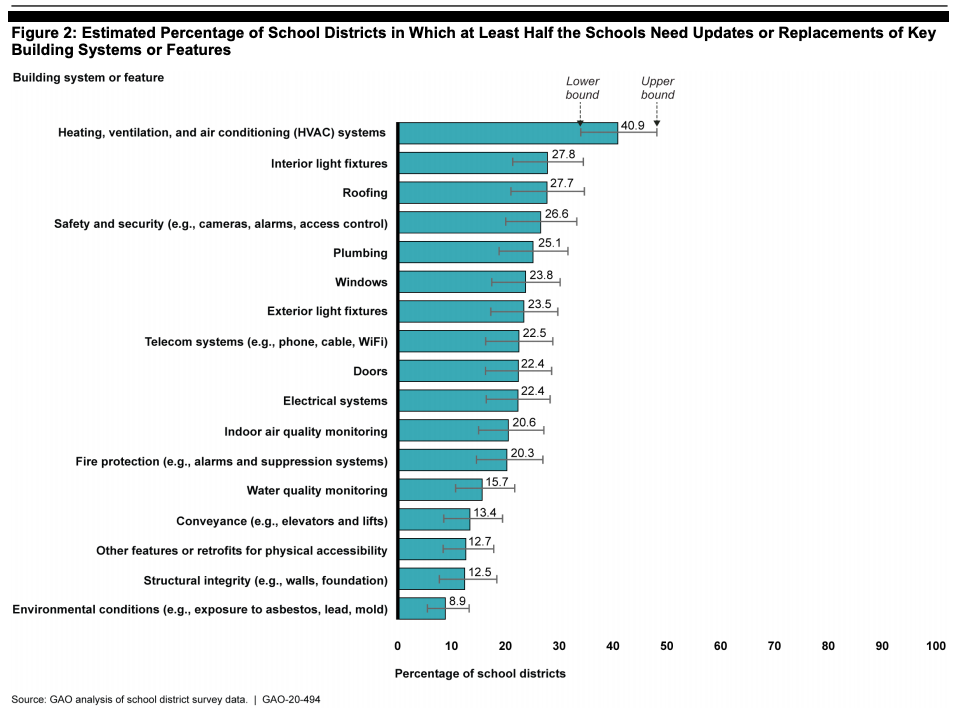
(GAO)
For Framingham, the mission was clear: ensure its ventilation systems were operating effectively and find ways to improve air quality, Torti said. Once the district determined that its HVAC systems needed no major repairs, it upgraded filters where possible. HVAC units older than 20 years aren’t able to handle the MERV 13 filters now called for by the American Society of Heating, Refrigerating and Air-Conditioning Engineers, he added. These filters capture up to 85 percent of exhalation droplets before air is recirculated.
Torti said his office was “nailed with every sales pitch” as it decided whether additional measures were needed. The district considered using either electrical charges or UVC radiation in its HVAC system to destroy virus particles. In the end, Framingham bought enough portable air filters to place two inside most rooms.
The HEPA air filters “might be overkill, but it gives people security,” he added. The units cost $160 each and another $40 per spare filter. They are able to capture ultra fine particles from the air, but this solution may not be available to every district: Framingham budgets $19,200 per student, well above the national average.
In a sign of the constantly changing conditions schools face, Torti said one of his staffers tested positive for COVID this week, requiring the bulk of his department to self-quarantine for 14 days. The case won’t affect the district’s plan to bring kids back into schools.
Nationwide, the approach districts are taking to checking schools’ air quality varies. In Chicago, where all learning remains remote, the district is “undertaking a comprehensive assessment of every ventilation system in every school building” prior to restarting in-person learning, said Emily Bolton, the district’s director of media communications and strategy.

Erin Bromage, immunologist and associate professor at the University of Massachusetts at Dartmouth (University of Massachusetts at Dartmouth)
In New York City, school officials investigated each classroom to ensure proper ventilation before starting hybrid classes in early October. The inspections sought to identify working HVAC systems, but they also counted a classroom as having adequate ventilation if the room has a working window, an option that grows less practical as the temperature drops.
California legislators approved up to $600 million on September 30 for schools to test, adjust, repair, or replace school ventilation systems in the next three years.
While replacing a school’s HVAC system can cost up to $7 million, it is not necessary to opt for an expensive fix to improve classroom air flow. Erin Bromage, an immunologist and associate professor at the University of Massachusetts at Dartmouth, said schools could improve air quality with nothing more than a well-positioned box fan in an open window.
Understanding the science
The reason schools’ air quality is important is that it can take less than five minutes in a room where people are talking to potentially transmit the virus, according to Bromage’s online analysis. Mixing classroom air with outside air and filtering both can stop the virus from lingering and reduce the chances of transmission.
The basic standard for schools is to replace the air inside a classroom four times an hour, said Bromage, but he said schools should try to up this rate to at least six times an hour.
RELATED
The Air They Breathe: NYC Teachers’ School Ventilation Complaint Spotlights Complex Challenge
Corey Metzger, the founder of Resource Consulting Engineers in Ames, Iowa, said schools need to consider air exchanges, filters, and the amount of outside air introduced into a building to find the right formula. Changing air six times an hour with poor filtration and little outside air is probably worse than changing the air four times an hour with 50 percent outside air that is well filtered, he said.
Those are the best-case scenarios.
Unfortunately, a lot of schools are old and improving a filter or changing the settings to increase outside air isn’t that easy. The average school is 44 years old, according to Education Week.
“We have a lot of old schools, similar to the rest of the country,” said Scott Brown, the director of school facilities in Maine. Many of these schools simply have unit ventilators that sit in individual classrooms and recirculate classroom air. “They really need to be replaced.”
Despite that, Brown said his state has spent the last 20 years catching up on maintenance, in particular improving schools’ air quality. Even though this puts Maine ahead of the curve to improve ventilation, Brown added, “I’m on the phone all day with people trying to reassure them. It’s a tough situation. I’ve been trying for years to bring attention to air quality.”
In addition to opening windows, some Maine schools are holding classes outdoors, using tents in some cases. But with nighttime temperatures already dipping below 30 degrees in some parts of the Pine Tree State, that’s at best a temporary fix.
An official with the American Federation of Teachers said schools can also buy CO2 monitors for each room. While the buildup of carbon monoxide isn’t typically a hazard, high levels can indicate poor air circulation. Even though monitors are fairly inexpensive at about $200, having one in every classroom would quickly add up. In New York City, teachers complained that they were not trained how to use these monitors and didn’t know what constituted a dangerous CO2 level.
HVAC repairs
If schools need to replace or make major repairs on HVAC systems, they may not have the funds or the time to get work done quickly, said Mike Stangel, the executive director of facilities for the Green Bay Area Public School District in Wisconsin. Tackling his district’s needs over the last decade has left the 42-school district in good air quality shape, he added.
Right now, Green Bay is only teaching a few classes of special needs students in person, but Stangel said he’s trying to replace classroom air eight times an hour and is flushing every school with 100 percent outside air at the end of each school day.
The idea of increasing the amount of outside air in a building is antithetical to the industry’s recent attempts to cut energy costs, experts said. Outside air typically has to be either heated or cooled to maintain a comfortable environment, increasing energy consumption.
This is one area where older buildings can have an advantage, said Metzger. New buildings are made more airtight to minimize the air exchange and be energy efficient. “Old buildings breathe really well with all their cracks and leaks. That makes it easier to get away with a lot of things you can’t in a tight building.”
One concern, Van Den Wymelenberg said, is ensuring the outside air an HVAC system is pulling in is clean. When fires were raging in three states earlier this year, that wasn’t a possibility. Schools located near industrial areas can have the same problem, where the building’s HVAC filters can’t remove harmful or smelly particles.

Kevin Van Den Wymelenberg, an associate professor and the director of the Energy Studies Building Lab at the University of Oregon. (University of Oregon)
While the experts agreed that air quality is key, Bromage was quick to point out that other factors, such as transmission rates, will also affect student safety. For schools located within areas that have low transmission rates, a school of 250 students should average about one positive COVID student every month. “That’s not a ‘close down the school’ rate,” he added. A similarly sized school in an area with high transmission rates might average one positive student for every two classrooms.
Bromage and others discouraged schools from spending lots of money on “deep cleaning,” saying the focus was misplaced. Some schools with an in-person hybrid schedule are taking one day off weekly to clean and disinfect high-touch areas such as desks and doorknobs. But “at most, surfaces are responsible for a few percentage of all infections,” Bromage said.
If schools have to pick one area to concentrate on, Van Den Wymelenberg said, it should be aerosol transmission. “Surfaces are easier to understand and less scary” than containing airborne particles. “It’s a much more complicated problem, but it is solvable.”
While the Oregon professor praised administrators for paying attention to air quality now, he rued that it took so long for most people to comprehend its importance. “We had all summer to get our schools ready, and now we’re left scrambling.”
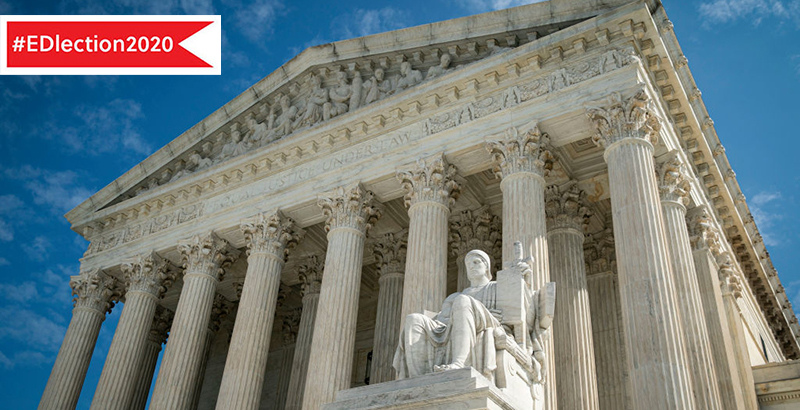
With its newly constituted 6-3 conservative majority, the U.S. Supreme Court on Wednesday will hear oral arguments in a Pennsylvania case that could affect the participation of religious groups in school choice programs.
Fulton v. City of Philadelphia addresses whether the city violated the First Amendment’s religious freedom protections by requiring Catholic Social Services, a foster care agency, to give up its opposition to same-sex relationships in order to receive a government contract.
While it doesn’t focus directly on schools, it comes after the court’s landmark decision earlier this year in Espinoza v. Montana Department of Revenue found that private schools can’t be excluded from a tax credit-funded scholarship program just because they’re religious.
“I imagine most of the justices in the majority in Espinoza will be suspicious of the exclusion of Catholic Social Services for the same reason they found the exclusion of religious schools unconstitutional in Espinoza,” said Joshua Dunn, a professor of political science at the University of Colorado-Colorado Springs.
The outcome in Fulton, for example, could affect a case in which a Baltimore-area Christian school is suing Maryland state Superintendent Karen Salmon, arguing that the state revoked its eligibility to participate in a voucher program because the school lacks a nondiscrimination policy that protects LGBTQ students.
Fulton will also be the first case involving religion before a court that includes newly-confirmed Associate Justice Amy Coney Barrett, a conservative Catholic who has connections to a church group and a network of Christian schools that has participated in Indiana’s voucher program and helped launch charter schools.
“You also have to think that Amy Coney Barrett would be sympathetic with the Espinoza majority,” Dunn said.
Meanwhile, the court could decide by early next year whether to take up another school choice case involving religious schools.
Three families involved in a case over Maine’s “tuitioning” program — which pays for students to attend any public or private school if their town doesn’t have a public school — are appealing last week’s ruling by the 1st Circuit Court of Appeals upholding the state’s 40-year ban on allowing families to use those funds at religious schools.
The three-judge panel, which included retired Supreme Court Justice DavidSouter, acknowledged the Espinoza decision. But it focused on the question that Espinoza left open: whether religious schools can be excluded because their curriculum might include religious teachings or worship. They wrote that even with the Espinoza decision, the question of whether schools receiving public funds can offer a religious program still deserves scrutiny.
To Arif Panju, a managing attorney at the Institute for Justice, which argued the Espinoza case and is representing the Maine families, the 1st Circuit’s ruling “has cert-worthy written all over it,” he said, referring to the legal jargon for the court agreeing to hear a case.
“This is why the Supreme Court exists,” he said. “We don’t think that the free exercise clause tolerates this discimimation. This is a situation that affects real parents and real children.”
But Alex J. Luchenitser, associate vice president and associate legal director of Americans United for Separation of Church and State, agreed with the 1st Circuit’s opinion.
“The Supreme Court has only said that states cannot exclude private schools from public funding on the basis of their religious status; the court has not required states to provide funding for religious education,” he said. “The Supreme Court should not deviate from that principle and should, therefore, decline to hear the planned appeal of the plaintiffs in the Maine case.”
With Barrett on the bench, the potential for another school choice case before the Supreme Court could have broad implications for the role of religion in public education. U.S. Secretary of Education Betsy DeVos added another wrinkle to the debate last week when she suggested that the Espinoza decision also paves the way for religious organizations to receive federal funds for charter schools in the future, even though the law currently prohibits it.
RELATED
With Barrett Poised to Join Conservative SCOTUS Majority,
Questions over charter schools
While Panju said it’s too soon to tell how rulings that lift restrictions on public funds for private religious schools could “play out in the charter context,” he said that as long as parents are exercising their “free and independent choice” to choose a school, there’s no violation of the First Amendment prohibition on establishing religion.
Other school choice experts agree.
“There should be no issue with a religious entity operating a charter,” said Leslie Hiner, the vice president for legal affairs at EdChoice, an advocacy organization.
In fact, while the federal charter schools program doesn’t permit charter schools to be affiliated with religious organizations, the majority of states do allow such groups to operate charter schools. They have to provide a non-religious education and meet other requirements, such as participating in state assessments and opening up financial records for audits.
Luchenitser added that DeVos’s invitation to religious organizations relies on the Espinoza opinion, which “continues to prohibit charter schools from injecting religious content into their curriculum or activities or discriminating based on religion.”
The states that currently prohibit churches or other religious groups from operating charter schools are Delaware, Georgia, Maine, Maryland, Pennsylvania, Tennessee, and Washington, according to M. Karega Rausch, president and CEO of the National Association of Charter School Authorizers.
“The biggest question is going to be what … state legislatures decide to do with the Espinoza case and this signal from the federal government,” Rausch said. If courts eventually rule that charter schools’ staff and students should be allowed to practice their religion at school, he added, that raises “enormous structural and cultural challenges.”
The cultural divide, he said, would be between those who see charter schools as a way to improve public education and those who view them as a way to expand choice and “break up the monopoly” of school districts.
Other “huge, thorny” issues, Rausch said, include whether teachers are educators or ministers, an issue the Supreme Court recently addressed in its 7-2 vote upholding a religious institution’s right to disregard the antidiscrimination policies that apply to secular organizations, such as those affecting LGBTQ individuals.
Charter schools, he said, already struggle to maintain autonomy over staffing and financial decisions. “There’s always a movement to make charters exactly like district-run schools,” he added, suggesting that charter organizers might not want the additional oversight that would accompany a religious-oriented program.
Regardless of the outcome of the presidential election, any future legal battles would likely begin at the state level, perhaps in those states that currently prohibit religious groups to operate charters, Rausch said.
That could involve an organization using the Espinoza decision as the legal basis for a lawsuit if its application for a charter is turned down or a state legislature attempting to remove the restriction on religious groups running charters.
RELATED
Barrett’s SCOTUS Confirmation Would Give Conservatives a Supermajority on Education Issues From Race-Based Admissions to School Choice but Could Create a ‘Desert for Equity,’ Experts Say
Dunn, at the University of Colorado-Colorado Springs, addressed the charter school question in a recent Education Next article. Written shortly before Barrett was confirmed, he said he didn’t expect public funding for an “overtly religious” charter school to be a reality in the near future.
But he said Barrett “may well prove more sympathetic to these kinds of claims.”
By BETH HAWKINS | November 4, 2020
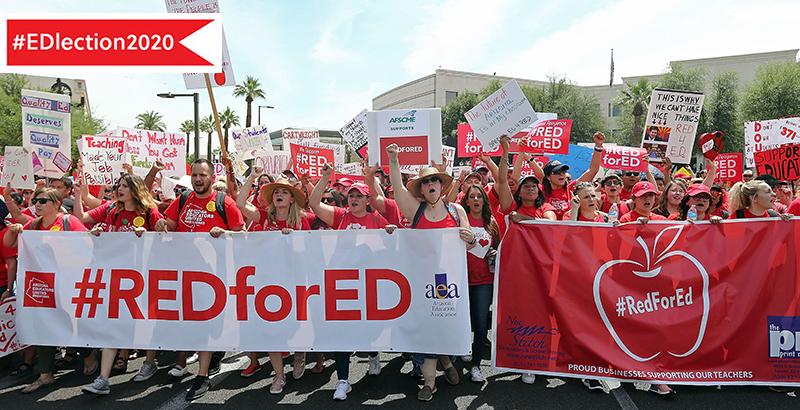
Arizona voters appear poised to pass a tax that would raise nearly $1 billion for teachers and other school staff by imposing a 3.5 percent “surcharge” on incomes of more than $250,000 for single taxpayers and $500,000 for couples. With 85 percent of the state’s votes counted Wednesday afternoon and Proposition 208 ahead 52.6-47.4, the Associated Press predicted the ballot question would succeed.
The money will fund pay increases for teachers and other school personnel, teacher hiring and training, and other initiatives to boost Arizona’s educator corps. The funds will likely be available starting in 2022.
“Voters will have sealed the deal on something that no legislator has had the courage to do, no governor has had the courage to do,” Arizona Education Association President Joe Thomas told azcentral.
The measure has its roots in the teacher walkouts of 2018. Photos of the state Capitol awash in a sea of educators, protesting stagnant wages in now-iconic #RedForEd T-shirts, went viral, sparking walkouts and protests elsewhere.
Frustrated that the Republican-dominated state government would not consider returning education funding to pre-recession levels, the movement’s backers vowed to take their case directly to the people. In the process, they helped energize a wave of Democratic voters, who turned out in 2018 and 2020 in larger numbers than before.
The Invest in Education Act, intended to create a dedicated source of revenue to address those concerns, was supposed to be on Arizona ballots in 2018, but a district court judge agreed with opponents who said the written description to be provided to voters lacked some specifics. In August of this year, the state Supreme Court disagreed, placing it on the 2020 ballot
By Helen Holmes • 11/02/20

Joan Baez at the 2019 Latin Grammy Special Merit Awards in Las Vegas, Nevada. Rich Fury/Getty Images
Among celebrities and cultural luminaries, there are a number of figures known both for their primary bodies of work and for their side hustles as painters; Lucy Liu and Anthony Hopkins are just a couple of examples. The folk singer and lyricist Joan Baez got into painting more recently, as she came towards the end of her touring career, and painting portraits has now become her primary artistic exercise. In a new interview with Rolling Stone, Baez explained how her lifelong political awareness has blended in with her creation of portraits, many of which feature political leaders like Kamala Harris and Dr. Martin Luther King Jr.
Baez’s paintings of public figures are fairly uniform in their execution, but her creations also come across as sincere representations of her peaceful beliefs and rewarding life experiences. She’s also explicitly using her artwork in order to convince people to vote. Baez recently began the “Vote! The 7 Portrait Series” on her own social channels, in which she posts her original artwork along with video commentary encouraging Americans to participate in democracy. “My painting is the best I can do at the moment to try and encourage people towards a possibly better world,” Baez told Rolling Stone. “I’m just really lucky to be able to do that.”
Since I first shared my painting, Dr. Anthony Fauci has continued to be disrespected and marginalized by the Trump administration’s lack of commitment to science. So I have now added a word to the art, hoping to convey the message to TRUST FAUCI. In doing so, we put our faith in medical science and truth rather than lies, smoke screens, and snake oil. #trustfauci #truthmatters #sciencematters
VOTE! The 7 Portrait Series
#5 of 7: Dr. Martin Luther King Jr.
#VoteThemOut #BidenHarris2020 #VOTE! #VoteBlue #DrMartinLutherKingJr #MartinLutherKing #MLK #WeVoteToHonorYou #VoteWithLove #CommitToVote #Justice #Peace #BlackLivesMatter #WeShallOvercome
🎨 www.joanbaezart.com
What We Know About the Youth Vote So Far: In 11 Key States, Early Data Suggest a Turnout Surge Among Young Americans
By MARK KEIERLEBER | November 4, 2020

Voter turnout among young Americans has long been lackluster, but early data suggest a substantial uptick in civic participation this time around as the pandemic pushed an unprecedented wave of early voting.
Even before Election Day, some 10 million people 18 to 29 years old cast early or absentee ballots, according to data from Tuft University’s Center for Information and Research on Civic Learning and Engagement. To be clear, the data are part of a larger trend: More than 100 million people across all age groups made their voices heard before Election Day, putting the 2020 election on track to shatter voter turnout records.
What’s that mean for the outcome of the presidential race, once we know it? In several key states, youth turnout, which favors Democrats, could be a major boon for Joe Biden.
One early-voting standout was Texas. Two days before Election Day, more than 1.3 million Texans 18 to 29 cast early or absentee ballots. Why’s that such a huge deal? Well, just 1.2 million Texans in that age group voted in 2016, according to CIRCLE. That includes early, absentee and Election Day votes combined.
Youth voters also make up a bigger share of the total ballots cast this time around. Four years ago, young people cast just 6 percent of early and absentee ballots in Texas. But this year, that percentage more than doubled to 13 percent.
It’s not just Texas. In 13 states, young people comprised a larger share of early voters than they did ahead of Election Day in 2016, according to an Oct. 29 data analysis by CIRCLE.
By Wednesday, data further bolstered predictions that youth turnout could be a major player in deciding the still too-close-call election between Biden and President Donald Trump. CIRCLE’s estimates suggested that the aggregate youth voter turnout in 11 key battleground states fell somewhere between 47 and 49 percent. The states include Arizona, Colorado, Florida, Georgia, Iowa, Montana, North Carolina, Ohio, South Carolina, Texas and Wisconsin. As election officials continue to count ballots in some of those crucial states, CIRCLE predicts that youth turnout could jump to between 51 and 53 percent.
That’d be a major change from just four years ago. In 2016, CIRCLE estimates that between 42 and 44 percent of young people made their voices heard in the equally close race between Trump and Hillary Clinton, suggesting a 10 percentage-point jump in turnout this year among voters 18 to 29.
EDlection 2020: See our complete coverage of 50 key education votes right here.
Posted by Lia Rovira in HUMAN WORLD | SPACE | November 4, 2020 EARTH SKY

SpaceX Starship’s many tasks may include launching humans into space, carrying satellites into orbit and — perhaps — removing troublesome pieces of space debris.
A comment by SpaceX president and COO Gwynne Shotwell has sparked interest in whether SpaceX’s Starship spacecraft might be useful in helping to clean up space debris orbiting Earth … when it’s not busy taking humans to the moon and Mars. Shotwell inserted a comment about Starship’s role as a potential space-age garbage collector during an online interview with Time magazine (Time 100 Talks) released on October 22, 2020.
In the video above, Shotwell’s comment about Starship’s possible part-time job as a space-age garbage truck begins at about the 8-minute mark. Shotwell was giving a nod to Starship’s planned reusability, which will allow the entire spacecraft to launch back and forth from Earth orbit to Mars repeatedly, when she said:
I do want to put in a plug for Starship here … Starship also has the capability of taking cargo and crew at the same time. And so it’s quite possible that we could leverage Starship to go to some of some of these dead rocket bodies – other people’s rockets, of course – basically, go pick up some of this junk in outer space.
It’s not going to be easy, but I do believe that Starship offers the possibility of going and doing that. And I’m really excited about it.
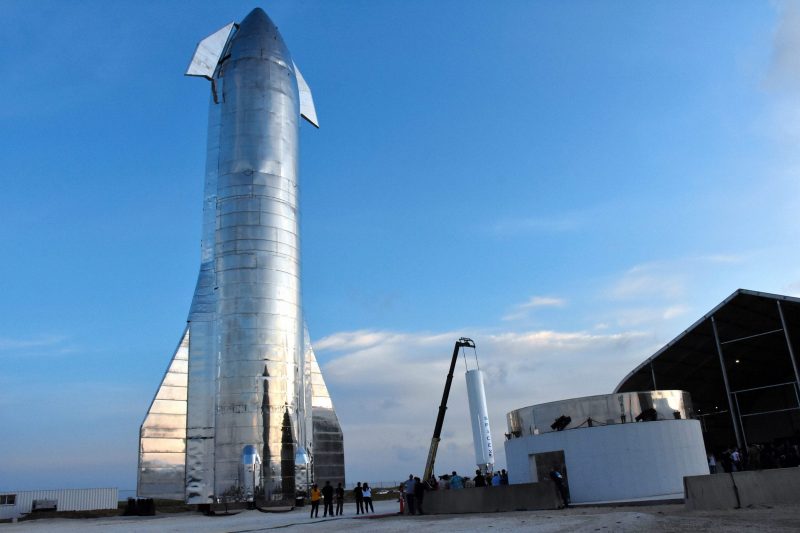
The SpaceX Starship MK1. Image by SpaceX.
Starship is at the heart of SpaceX founder and CEO Elon Musk‘s longtime Mars-colonization goal, which he has said may likely be the private company’s primary vehicle for future space travel. If all goes according to plan, Starship’s many tasks will include launching people to the moon, Mars and beyond, as well as superfast travels here on Earth, carrying satellites into orbit and – perhaps – collecting and de-orbiting particularly big and troublesome pieces of space junk.
Many experts believe that space junk poses a serious threat to humanity’s use and exploration of the final frontier going forward. About 34,000 objects greater than 4 inches (10 cm) in diameter are thought to be circling Earth at this very moment, according to the European Space Agency (ESA). And it’s much harder to get an idea about the smaller stuff, but the ESA estimates are frightening: they call for about 900,000 or so orbital objects in the 0.4-inch to 4-inch (1 to 10-cm) range and 128 million shards between 0.04 inches and 0.4 inches wide (1 mm to 1 cm).
All of this material poses a serious threat to rockets and spacecraft passing by, risking major damage to hardware and flight directories because of the velocities involved.
The costs of building and launching satellites are dropping, meaning more of them are getting flung into space and creating traffic within Earth’s orbital space lanes. The fear is that a collision or two could spawn a space junk cascade – with collisions creating more debris, which create more collisions, and so on – generating clouds of accident-causing debris. This scenario, known as the Kessler Syndrome, has the potential to make space operations in Earth orbit increasingly difficult. This dread is what fuels the idea that the spaceflight community should therefore start taking mitigation measures now.
And, of course, there have been many orbital collisions already. For example, in February 2009, the defunct Russian military satellite Kosmos 2251 barreled into the operational communications satellite Iridium 33, spawning 1,800 pieces of trackable debris (and many others too small to spot) by the following October. Additionally, China and India have generated debris clouds on purpose, during destructive anti-satellite tests in 2007 and 2019, respectively.

Artist’s rendition of space junk in Earth’s orbit. Image via Getty.
SpaceX in particular is one major driver for a growing population; the company has already launched nearly 900 of its Starlink internet satellites to low Earth orbit, and has permission to launch thousands more. However, this may be the reason the company is taking proactive action on the matter. In addition to space junk sweeping, the company has also decided to lower the megaconstellation’s operational altitude, Shotwell says. SpaceX’s original plans called for first-generation Starlink satellites to fly between 684 and 823 miles high (1,100 to 1,325 km), but the shift in thinking brought them down to an altitude of 340 miles (550 km).
SpaceX’s standard operating procedure for Starlink involved de-orbiting each satellite before it dies, but flying at just 340 miles up provides a sort of failsafe: atmospheric drag will bring a defunct satellite down from that altitude, to burn up in the atmosphere, in just one to five years. Starlink satellites can also perform collision-avoiding maneuvers autonomously, using information from the U.S. Department of Defense’s debris-tracking system, according to the SpaceX Starlink page.
At the same time, researchers are developing a cleanup cubesat called OSCaR – an acronym for Obsolete Spacecraft Capture and Removal – which would hunt down and de-orbit debris on the cheap using onboard nets and tethers. OSCaR would do so relatively autonomously, with little guidance from controllers on the ground. The spacecraft is a 3U cubesat, meaning that it will be very capable for its small size, featuring onboard navigation and communication gear; power, propulsion and thermal-control systems; and four net-launching gun barrels. Each OSCaR iteration will be capable of capturing and removing four pieces of debris, and when that work is done, the cleanup cubesat will de-orbit itself within five years.
Rensselaer Polytechnic Institute aims to test OSCaR on the ground sometime this year, and a test in space will follow at some point if all goes according to plan.

Artist’s rendition of OSCaR cubesat. Image via Rensselaer Polytechnic Institute.
SpaceX is working toward the final Starship design via a series of increasingly ambitious prototypes.
The final Starship will have six of the company’s new Raptor engines, while the Super Heavy rocket will sport about 30 Raptors. With that said, SpaceX plans to have the rocket-spaceship duo up and running relatively soon. Starship is in the running, for instance, to land astronauts on the moon for NASA’s Artemis program, which is targeting 2024 for the first of those touchdowns; Japanese art-enthusiast Yusaku Maezawa has booked a Starship trip around the moon, with a targeted launch date of 2023.
And then of course, there’s the red planet – Mars – the ultimate destination for Starship. Shotwell predicted in the video above:
If the Starship program goes as planned, I do think people will be able to travel to Mars in 10 years.
Bottom line: SpaceX Starship’s many tasks may include launching humans into space, carrying satellites into orbit and — perhaps — removing troublesome pieces of space debris. The fear is that a collision or two could spawn a space junk cascade, generating clouds of debris that cause further accidents.
Read more from Space.com: SpaceX’s Starship may help clean up space junk
Read more from Spaceflight Now: SpaceX executive pitches Starship for space debris cleanup
